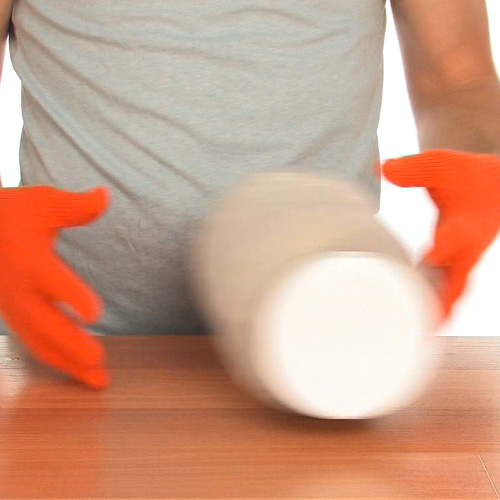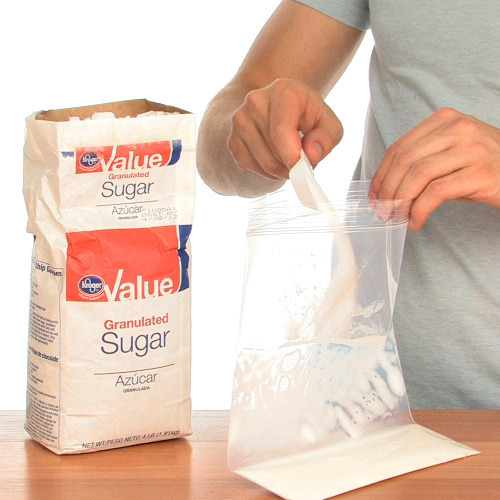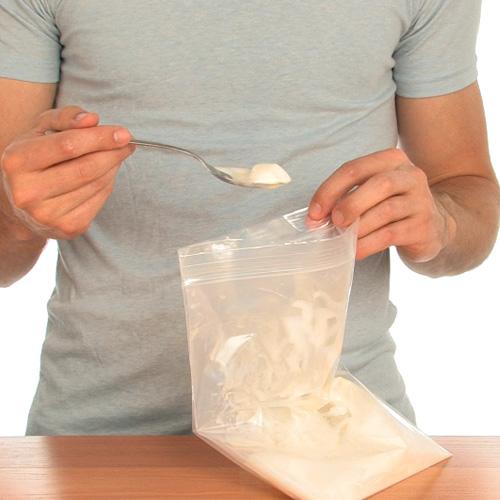Brown Sugar Homemade Ice Cream
Food always tastes better when it’s homemade, and the same is true for ice cream. We went out and got some brown sugar from Imperial […]

The Roman emperor, Nero, is credited as the first person to have a type of ice cream made for his meals. Snow was used to freeze fruit drinks that he enjoyed so much. In 1310, Marco Polo helped out as did King Charles I of France in 1640. The French served it in Philadelphia in 1782 to honor a new country: the USA! Dolly Madison served it in the White House in 1813. In 1846, Nancy Johnson invented the hand-crank ice cream freezer. Ice cream cones were first seen in 1904 at the Louisiana Purchase Exposition (better known as the St. Louis World’s Fair). The rest, of course, is history. The secret to making ice cream is to lower the freezing point of ice so it can freeze the cream. How? The scientific secret is plain old salt! Here’s a simple recipe you can follow right at home to make your own ice cream. Who needs Nero?

Fill the container about half-full with crushed ice. Add about 6 T of rock salt to the ice. Seal it and shake the ice and salt combo for about five minutes. You’ll need to wear your gloves when you’re handling the jar. If you’re curious as to why you should wear gloves, a thermometer in the ice will explain it. The salt and ice mixture gets down to about 14℉ (-10℃)!

Mix the following ingredients in one of the zipper-lock bags:
Push as much air out of the bag before sealing it tightly. Too much air left inside may pop the bag open during the shaking. Seal the first bag into the second bag by pushing out the air as well. By double-bagging, the risk of salt water and ice leaking into the ice cream mix is minimized. Place the two sealed bags into the ice and salt mixture. Close the container tightly.
Wrap the container in the towel or put on your gloves. Shake, rock ’n roll, and mix that container! Your ice cream should be ready after about 15-20 minutes so pace your shaking energy. Maybe get some help with an offer to share a little of your creation.

When your ice cream is as firm as you want it, remove the bags from the jar and rinse them off with cold water. You don’t want ice or salt water accidentally getting into your treat. Enjoy your creation right out of the bag. Store any leftovers – what are the chances?? – in a freezer. Start planning for your next batch and consider making new flavors, too. Maybe this is how Ben and Jerry got started.
The same reason salt is used on icy roads and sidewalks in winter explains why salt is mixed with ice to make ice cream. Salt causes the ice to melt. When salt and ice mix, the freezing point of the ice is lowered and the freezing point reached depends on the amount of salt used. The more salt is added, the lower the temperature can get before the saltwater solution freezes. For example, water will normally freeze at 32℉ (0℃). A 10% salt solution freezes at 20℉ (-7℃) and a 20% solution freezes at 2℉ (-17℃). When salt is added to ice (or snow), some of the ice melts because the freezing point is lowered. Keep in mind, however, that heat must come from somewhere to melt the ice. The heat that causes melting comes from the surroundings and, in this case, it’s from the warmer cream mixture. By lowering the temperature at which ice freezes, you were able to create an environment in which the cream mixture could freeze at a temperature below 32℉ (0℃) and become ice cream. The shaking (or stirring in an ice cream maker) moves the warmer cream mixture from the inside to the outside of the bag so it can freeze evenly. That way you make a smoother product. It also adds air to the final product so it’s fluffed up a little bit. Yum!
By the way, The Louisiana Purchase Exposition, better known as the St. Louis World’s Fair, was an international exposition held in St. Louis, Missouri, in 1904. An ice cream vendor working there ran out of dishes to serve his product. He improvised a solution by rolling up some thin waffles to make a cone-shaped carrier for the ice cream. Voilá! It has been that way ever since and explains why today’s ice cream cones are made to look like waffles.